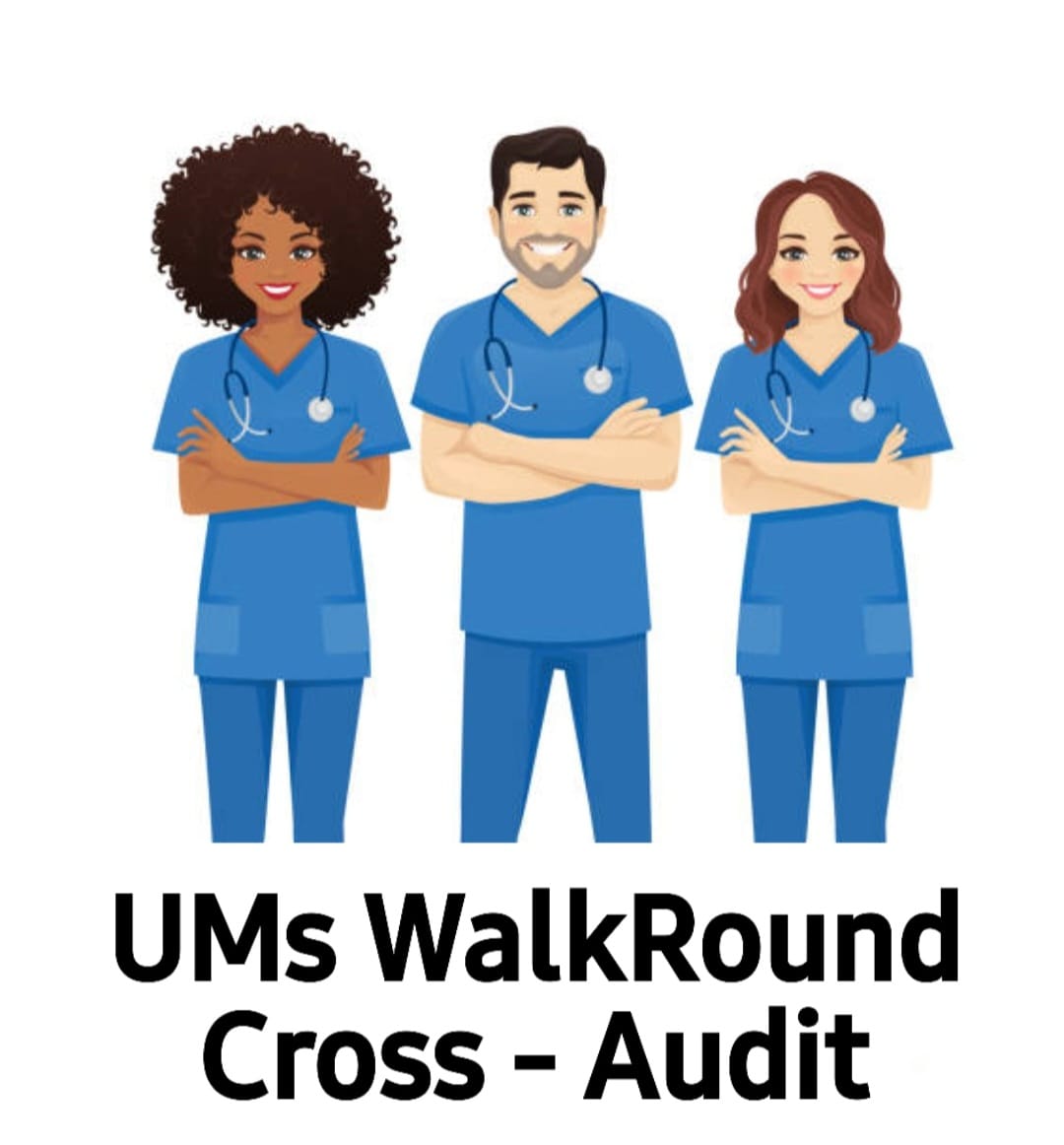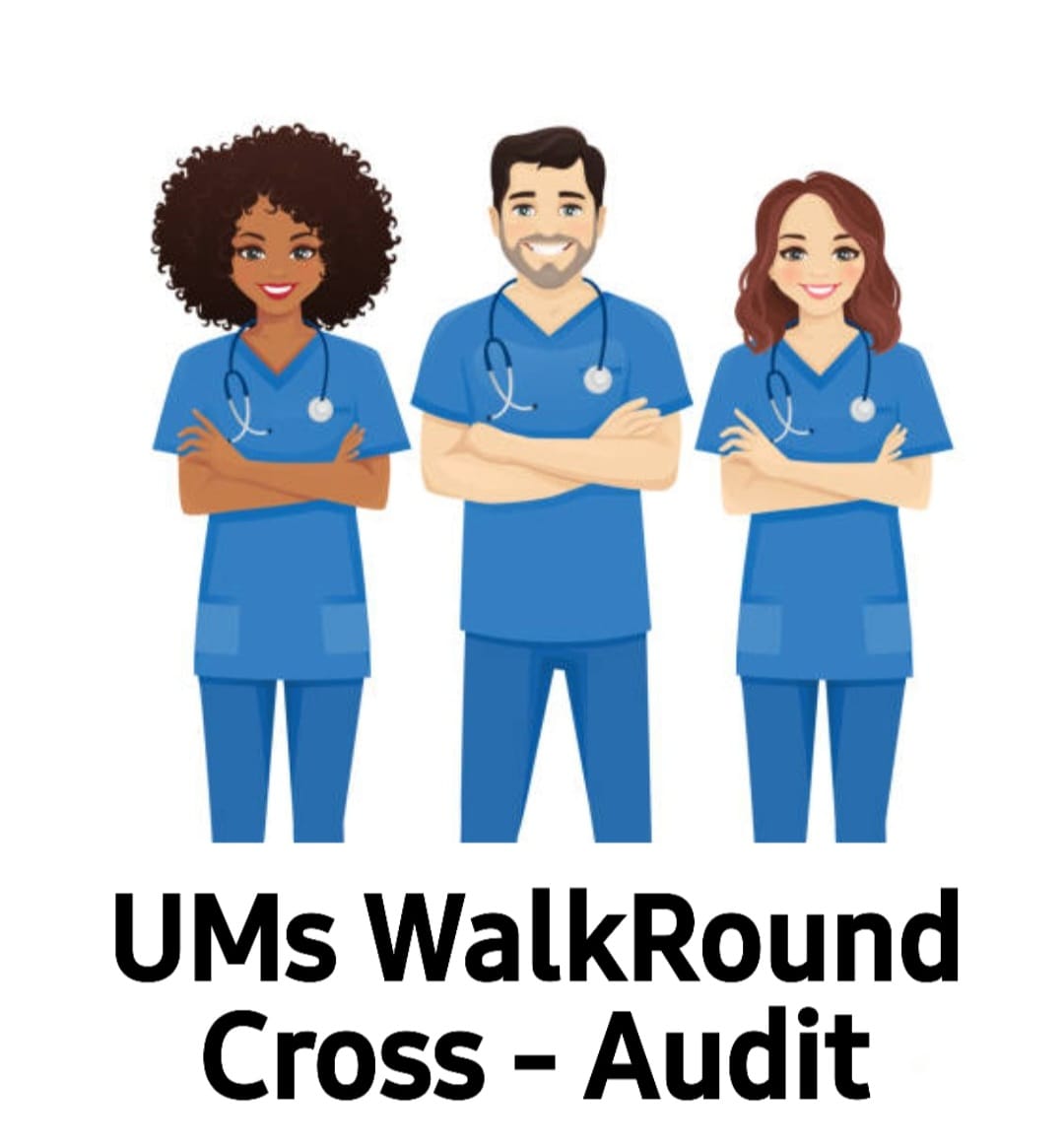Title Page
-
Conducted on
-
Prepared by
-
Site
-
MRNs (If applicable)
IPC Inpatient Audit Checklist
General
-
Eating, drinking, and storing food in dedicated pantry room or area
- 0
- 1
- 2
- 3
- 4
- 5
- N/A
Dress Code
-
All staff in the department are complying with their dress code
- 0
- 1
- 2
- 3
- 4
- 5
- N/A
-
Doctors wear clean lab coat with buttons closed
- 0
- 1
- 2
- 3
- 4
- 5
- N/A
Hand Hygiene
-
There are dedicated hand wash sinks with adequate supplies (soap & paper towels)
- 0
- 1
- 2
- 3
- 4
- 5
- N/A
-
Adequate number of alcohol based hand rub dispensers are available
- 0
- 1
- 2
- 3
- 4
- 5
- N/A
-
Soap is never added to partially empty soap dispensers
- 0
- 1
- 2
- 3
- 4
- 5
- N/A
-
Liquid soap dispensers are cleaned with soap and water and disinfected with chlorine daily before refill
- 0
- 1
- 2
- 3
- 4
- 5
- N/A
-
Finger nails are kept short, clean, and free from nail polish
- 0
- 1
- 2
- 3
- 4
- 5
- N/A
-
Staff do not wear jewelry or rings
- 0
- 1
- 2
- 3
- 4
- 5
- N/A
-
Compliance with hand wash/alcohol rub according to five moments
- 0
- 1
- 2
- 3
- 4
- 5
- N/A
PPE
-
Adequate and proper PPE are available
- 0
- 1
- 2
- 3
- 4
- 5
- N/A
-
Surgical mask wear on entering patients’ rooms
- 0
- 1
- 2
- 3
- 4
- 5
- N/A
-
Proper PPE wear according to the procedure done
- 0
- 1
- 2
- 3
- 4
- 5
- N/A
-
Proper PPE donning and removal
- 0
- 1
- 2
- 3
- 4
- 5
- N/A
Patients Hygiene
-
Daily shower with antiseptic soap containing chlorhexidine (e.g. Cyteal®)
- 0
- 1
- 2
- 3
- 4
- 5
- N/A
Blood Sampling / Cannulation Aseptic Technique
-
Preparation of supplies/tray (Using one trial medication bag)
- 0
- 1
- 2
- 3
- 4
- 5
- N/A
-
Doing hand hygiene with alcohol based hand rub solution
- 0
- 1
- 2
- 3
- 4
- 5
- N/A
-
Wearing gloves (sterile in cannulation)
- 0
- 1
- 2
- 3
- 4
- 5
- N/A
-
Using disposable tourniquet
- 0
- 1
- 2
- 3
- 4
- 5
- N/A
-
Proper skin preparation: Using sterile gauze soaked with Cyteal® then drying, followed by alcohol swab and waiting for dryness
- 0
- 1
- 2
- 3
- 4
- 5
- N/A
-
Compliance with the “No Touch Technique”
- 0
- 1
- 2
- 3
- 4
- 5
- N/A
-
No recapping for the used syringes or needles
- 0
- 1
- 2
- 3
- 4
- 5
- N/A
-
Proper waste segregation
- 0
- 1
- 2
- 3
- 4
- 5
- N/A
-
Removal of gloves and alcohol rub
- 0
- 1
- 2
- 3
- 4
- 5
- N/A
Parenteral Medications
-
Medication carts are maintained clean and dry
- 0
- 1
- 2
- 3
- 4
- 5
- N/A
-
Aseptic technique is used during parenteral medications withdrawal
- 0
- 1
- 2
- 3
- 4
- 5
- N/A
-
Multi-dose vials are labeled with the date and time of opening
- 0
- 1
- 2
- 3
- 4
- 5
- N/A
-
Multi-dose vials are discarded 28 days after first use unless the manufacturer specifies otherwise Only ONE multi-dose vial is used at a time
- 0
- 1
- 2
- 3
- 4
- 5
- N/A
-
Single-dose/single-use vials are used within one hour from initial opening, with any remaining contents discarded
- 0
- 1
- 2
- 3
- 4
- 5
- N/A
-
Medications are injected as soon as feasible and within 1 hour after drawing up into syringes
- 0
- 1
- 2
- 3
- 4
- 5
- N/A
Isolation Precautions
-
Isolation sign is placed on the door and is clearly visible to all who enter the room
- 0
- 1
- 2
- 3
- 4
- 5
- N/A
-
PPE according to type of isolation are available & used upon entry to room:
- 0
- 1
- 2
- 3
- 4
- 5
- N/A
-
Airborne: High efficiency mask (N95) and discarded after leaving the room
- 0
- 1
- 2
- 3
- 4
- 5
- N/A
-
Droplet: Surgical mask and discarded after leaving the room
- 0
- 1
- 2
- 3
- 4
- 5
- N/A
-
Contact: Clean gloves and long sleeves gown and discarded before leaving the room.
- 0
- 1
- 2
- 3
- 4
- 5
- N/A
Reprocessing of Medical Instruments and Equipment
-
Rinsing of contaminated instruments and equipment and collection in covered container immediately after use
- 0
- 1
- 2
- 3
- 4
- 5
- N/A
-
Glucometers are wiped between patients with alcohol swab
- 0
- 1
- 2
- 3
- 4
- 5
- N/A
-
Stethoscopes and blood pressure cuffs are disinfected between patients
- 0
- 1
- 2
- 3
- 4
- 5
- N/A
-
Laryngoscopes are sterilized between patients
- 0
- 1
- 2
- 3
- 4
- 5
- N/A
-
Oxygen humidifier is sterilized between patients & every 24 hours for same patient
- 0
- 1
- 2
- 3
- 4
- 5
- N/A
-
Sterile water is used to fill humidifiers
- 0
- 1
- 2
- 3
- 4
- 5
- N/A
-
Suction bottles and tubing are reprocessed daily for the same patient
- 0
- 1
- 2
- 3
- 4
- 5
- N/A
Storage of Supplies / Medications
-
All supplies are clean, dry and stored in a proper way
- 0
- 1
- 2
- 3
- 4
- 5
- N/A
-
No supplies or items are stored on the floor or under the sinks
- 0
- 1
- 2
- 3
- 4
- 5
- N/A
-
Refrigerators are clean and contain only drugs
- 0
- 1
- 2
- 3
- 4
- 5
- N/A
-
Refrigerators’ temperature is recorded daily
- 0
- 1
- 2
- 3
- 4
- 5
- N/A
-
No expired supplies / medications are observed
- 0
- 1
- 2
- 3
- 4
- 5
- N/A
Blood Exposure Management
-
Proper blood exposure management as per policy
- 0
- 1
- 2
- 3
- 4
- 5
- N/A
Linen Management
-
Proper collection of used linen from patients’ rooms
- 0
- 1
- 2
- 3
- 4
- 5
- N/A
-
Proper transport of linen from department to laundry using covered carts
- 0
- 1
- 2
- 3
- 4
- 5
- N/A
-
Linen is changed daily, when contaminated, and between patients
- 0
- 1
- 2
- 3
- 4
- 5
- N/A
-
Mattresses and pillows are covered with protective water proof cover
- 0
- 1
- 2
- 3
- 4
- 5
- N/A
Environmental Safety
-
Proper environmental surfaces cleaning and disinfection (daily and when contaminated)
- 0
- 1
- 2
- 3
- 4
- 5
- N/A
-
Equipment surfaces and computers’ keyboards are cleaned and disinfected by the approved disinfectant (daily and when contaminated)
- 0
- 1
- 2
- 3
- 4
- 5
- N/A
-
Proper management of blood spillage
- 0
- 1
- 2
- 3
- 4
- 5
- N/A
Waste Management
-
Proper waste segregation using colored bags and sharp containers
- 0
- 1
- 2
- 3
- 4
- 5
- N/A
-
Proper time of collection of waste bags
- 0
- 1
- 2
- 3
- 4
- 5
- N/A
-
Waste bags are tied, labelled, and placed in the dirty utility room
- 0
- 1
- 2
- 3
- 4
- 5
- N/A
Playing Room
-
Patients are given instructions for hand hygiene before and after playing
- 0
- 1
- 2
- 3
- 4
- 5
- N/A
-
Toys are cleaned and disinfected between patient uses, and as per policy (Toys’ units “twice/week”, stationary toys “daily”)
- 0
- 1
- 2
- 3
- 4
- 5
- N/A
HVAC
-
Ducts & Filters of air conditioning system are cleaned as per policy
- 0
- 1
- 2
- 3
- 4
- 5
- N/A
-
Monitoring for air pressure in isolation rooms
- 0
- 1
- 2
- 3
- 4
- 5
- N/A









